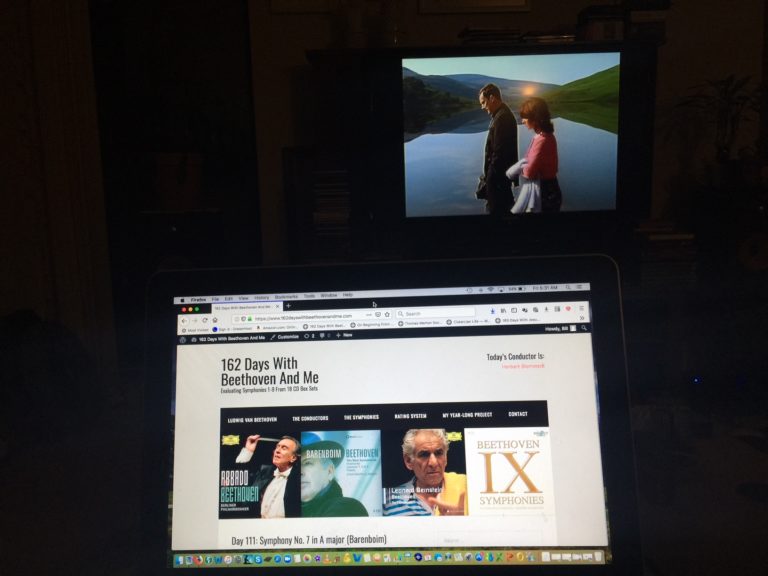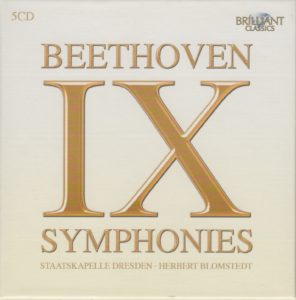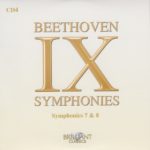
My listening post this evening/early morning is with the Irish TV series Ballykissangel in the background. In this scene (late in Season Three), Fr. Peter Clifford and local barkeep Assumpta Fitzgerald have a heart to heart chat while out on a walk.
My wife hates Ballykissangel. She says it moves too slowly.
Maybe it does. But I think that’s part of its charm – that and the Irish accents, which I noticed have a trait to them not usually heard in people who affect an Irish accent. Listening to all of the actors in Ballykissangel I noticed that there’s a particular way they pronounce a “t” word, especially if it’s at the end of a sentences. Like the word “What?”
The actors in Ballykissangel pronounce that “t” with a little exhalation of air, something like “what-uh.” But the “uh” isn’t pronounced at all. It’s more like a sound made at the roof of one’s mouth.
Anyway, I learned a lot about pronouncing Irish words watching Ballykissangel.
Also, I learned that a priest and a bar keep should not get too close to one another.
Moving on…
In the foreground is American-Swedish conductor Herbert Blomstedt (1927- ), Staatskapelle Dresden, and Beethoven’s Symphony No. 7 in A major.
The record label is the severely underrated Brilliant Classics, one of the great labels in the world for well recorded Classical music at unbelievably affordable prices.
It was back a few years when I listened to everything Beethoven composed that I first encountered Maestro Blomstedt. The edition was this one from Brilliant Classics. That set is, apparently, out of print and selling for a lot more than I paid for it back then. Thankfully, there appears to be a new new edition for about $140 here.
Anyway, that Beethoven Complete Edition box set includes (of course) all nine Beethoven symphonies performed by Staatskapelle Dresden, conducted by Herbert Blomstedt.
Back then, I remember hearing Movement II from Beethoven’s Seventh and immediately wanting to share it with my wife. That night, we sat near the stereo and I played Blomstedt’s interpretation of the Seventh, alerting my wife to what was coming in the form of the second movement.
She doesn’t react the same way I do about most things. So I’m not sure it imprinted on her soul the way it did mine.
Ever since I heard Blomstedt’s performances, I’ve used him as the yardstick against which I gauge other performances by other conductors and orchestras.
Since Beethoven’s Seventh was one of my favorites from the Blomstedt performances, I’m eagerly awaiting today’s listening task. I’d like to see if it’s as good as I remembered it.
First, though, I encountered Maestro Blomstedt six times previously in my Beethoven project, on…
 Day 4. Rating: Not “Meh!” but not “Huzzah!”
Day 4. Rating: Not “Meh!” but not “Huzzah!”
Day 22. Rating: “Meh!”
Day 40. Rating: Not “Meh!” but not “Huzzah!”
Day 58. Rating: “Huzzah!”
Day 76. Rating: “Huzzah!”
Day 94. Rating: “Meh!”
It’s funny how inaccurate memory can be sometimes.
Those ratings are not exactly the stuff of legend.
 Beethoven wrote his symphonies in four parts (except for the Sixth, which is in five). The time breakdown of this particular one (Symphony No. 7 in A major), from this particular conductor (Blomstedt, at age 48) and this particular orchestra (Staatskapelle Dresden), at this particular time in history (1975) on this particular record label (Brilliant Classics) is as follows:
Beethoven wrote his symphonies in four parts (except for the Sixth, which is in five). The time breakdown of this particular one (Symphony No. 7 in A major), from this particular conductor (Blomstedt, at age 48) and this particular orchestra (Staatskapelle Dresden), at this particular time in history (1975) on this particular record label (Brilliant Classics) is as follows:
I. Poco sostenuto – Vivace……………………………..13:31
II. Allegretto………………………………………………………9:57
III. Presto – Assai meno presto (trio)……………….9:45
IV. Allegro con brio…………………………………………..9:03
Total running time: 41:36
My Rating:
Recording quality: 4 (a nice recording)
Overall musicianship: 5 (love the tempo)
CD liner notes: 0 (no liner notes in this budget-priced box set – boo! hiss! – but an extensive set of notes can be downloaded from the Brilliant Classics site covering their complete Beethoven box set; however, although extensive, the notes are not exhaustive; no information at all is provided about the conductors, the players, the orchestras, etc.)
How does this make me feel: 5 (“Huzzah!”)
For whatever reason, I still love this Blomstedt performance of Beethoven’s Seventh. I especially dig the all-important Movement II. It’s precisely how I want it to be.
I recommend this entire set. It’s inexpensive. It’s well recorded. It’s well played.
You could probably do better with a box set that costs 2-3 times more. But you don’t need to. This one is way above average – especially for the price.
